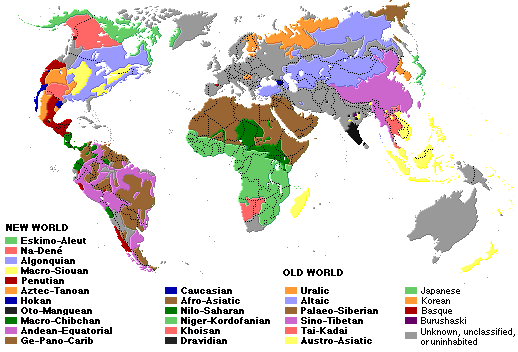“To prosper economically and to improve relations with other countries, Americans need to read, speak and understand other languages.” U.S. Secretary of Education Arne Duncan, 8 December 2010.
While learning a second language is linked with a number of different benefits, including slowing brain aging, improving multitasking abilities, and the acquisition of another language, this somewhat elides the question of which language should one study for a career in public administration or international relations?The answer to that question is whether you are making a tactical decision to leverage a competitive language advantage in the current job market, a similar tactical decision on adding on a language close to one you already speak, or a strategic decision to develop additional competencies in an area that would allow
Leveraging Comparative Advantages
The United States government has identified thirteen languages that fall under the categorization of a “Critical-Need Language.” Each of these represents a language that the U.S. Government feels is useful to the future national security of the U.S. and has been identified as lacking in the current civil and foreign service application pools.
Getting meta for a second, there is a branch of analysis that states that the lower the initial discriminating qualifications for any position are, the more reflective this is of a greater need.
Thus, looking at the current list of languages offered by the CLS program, those which offer beginner-level language instruction represent a greater need area. This means that there are fewer overall speakers and a comparatively smaller applicant pool. By this logic, it would appear that Azerbaijani, Bangla, Hindi, Indonesian, Korean, Punjabi, Turkish, and Urdu would be good languages to pursue.
Adding on Similar Languages

A number of languages evolve from similar roots or proto-languages. Approximately 3 Billion people speak some version of an Indo-European Language, about 1.3 Billion speak a Sino-Tibetan Language, 0.6 Billion speak an Altaic language, 0.35 Billion speak Afroasiatic, among others. For a greater breakdown on the comparative relationships between language families, see the Ethnologue.
In some cases, once the languages move from the large proto-groups into the smaller language families, i.e. moving from Indo-European to Germanic, there may be greater similarities between grammar and vocabulary structure between them. Thus, it may be useful to build upon similar structures by moving from knowing English and German to knowing English, German and Danish.
Strategic Decisions
The final decision on which language to learn may be as a result of a broader strategic look at where the linguistic landscape may be in 15 years. This involves working under a set of assumptions that may or may not be valid, but has the additional opportunity of allowing one to pair language acquisition with additional cultural and historical knowledge necessary to be known as regional expert.

For example, Brazil is one of the key BRICS nations, with a growing GDP, an increasing presence in international policy, a key role in Western Hemisphere security affairs, and as evidenced by this summer’s World Cup and the 2016 Rio Olympics an increased role in international culture.
Thus, it could be a strategic decision to recognize that Brazilian Portuguese may be a language worth knowing in the third decade of the 21st Century.
